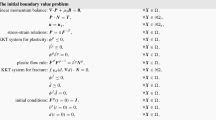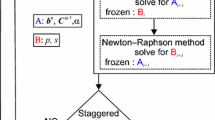Abstract
This paper summarizes the work we conducted in recent years on modeling plastic response of metallic alloys and ductile fracture of engineering components, with the emphasis on the effect of the stress state. It is shown that the classical J2 plasticity theory cannot correctly describe the plasticity behavior of many materials. The experimental and numerical studies of a variety of structural alloys result in a general form of plasticity model for isotropic materials, where the yield function and the flow potential are expressed as functions of the first invariant of the stress tensor and the second and third invariants of the deviatoric stress tensor. Several mechanism-based models have been developed to capture the ductile fracture process of metallic alloys. Two of such models are described in this paper. The first one is a cumulative strain damage model where the damage parameter is dependent on the stress triaxiality and the Lode parameter. The second one is a modification to the Gurson-type porous plasticity models, where two damage parameters, representing void damage and shear damage respectively, are coupled into the yield function and flow potential. These models are shown to be able to predict fracture initiation and propagation in various specimens experiencing a wide range of stress states.
Similar content being viewed by others
References
R. von Mises, Mathematisch-Physikalische Klasse, 582 (1913).
X. Gao, T. Zhang, J. Zhou, S. Graham, M. Hayden and C. Roe, International Journal of Plasticity 27, 217 (2011).
J. Zhai, X. Gao, J. Sobotka, B. Webler and B. Cockeram, Journal of Nuclear Materials 451, 292 (2014).
J. R. Rice and D. M. Tracey, J. Mech. Phys. Solids 17, 201 (1969).
G. R. Johnson and W. H. Cook, Engng Fract. Mech. 21, 31 (1985).
A. Gurson, J. Eng. Mater. Technol. 99, 2 (1977).
V. Tvergaard and A. Needleman, Acta Metall. 32, 157 (1982).
J. Lemaitre, J. Eng. Mater. Technol. 107, 83 (1985).
X. Gao, T. Zhang, M. Hayden and C. Roe, International Journal of Plasticity 25, 2366 (2009).
X. Gao and J. Kim, International Journal of Solids and Structures 43, 6277 (2006).
J. Zhou, X. Gao, M. Hayden and J.A. Joyce, Engng Fract. Mech. 85, 103 (2012).
M. Wilkins, R. Streit and J. Reaugh, “Cumulative-strain-damage model of ductile fracture: simulation and prediction of engineering fracture tests,” Lawrence Livermore National Lab, Science Applications, Inc., San Leandro, CA (USA), 1980.
L. Xue and T. Wierzbicki, Int J Appl. Mech. 1, 267 (2009).
C. Chu and A. Needleman, Journal of Engineering Materials and Technology 102, 249 (1980).
L. Xue, Engng Fract. Mech. 75, 3343 (2008).
K. Nahshon and J. W. Hutchinson, European Journal of Mechanics-A/Solids 27, 1 (2008).
J. Zhou, X, Gao, J. Sobotka, B. Webler and B. Cockeram, International Journal of Solids and Structures 51, 3273 (2014).
Author information
Authors and Affiliations
Rights and permissions
About this article
Cite this article
Gao, X., Zhou, J. & Zhai, J. Modeling of Ductile Fracture at Engineering Scales: A Mechanism-Based Approach. MRS Online Proceedings Library 1759, 1–12 (2015). https://doi.org/10.1557/opl.2015.52
Published:
Issue Date:
DOI: https://doi.org/10.1557/opl.2015.52




